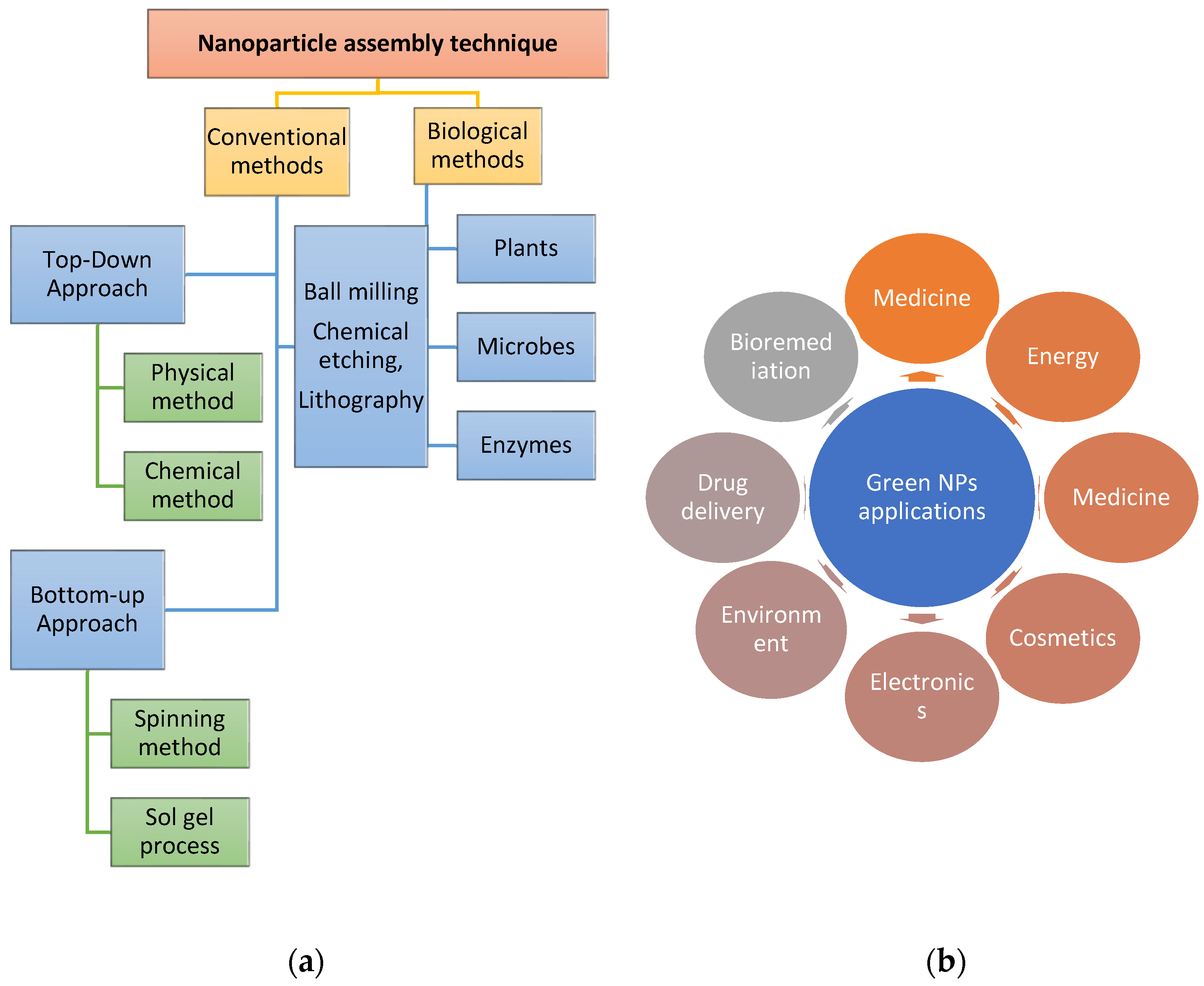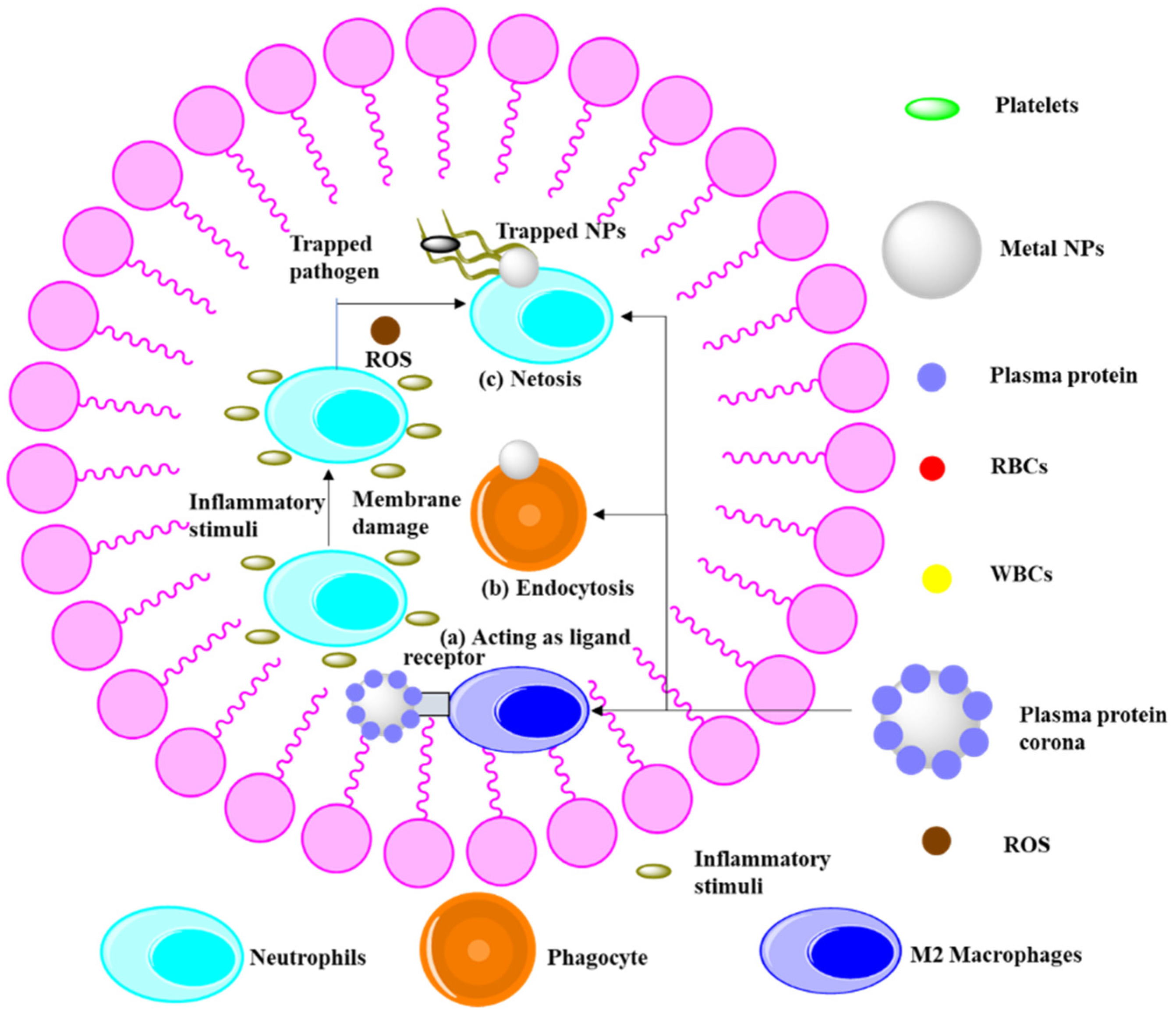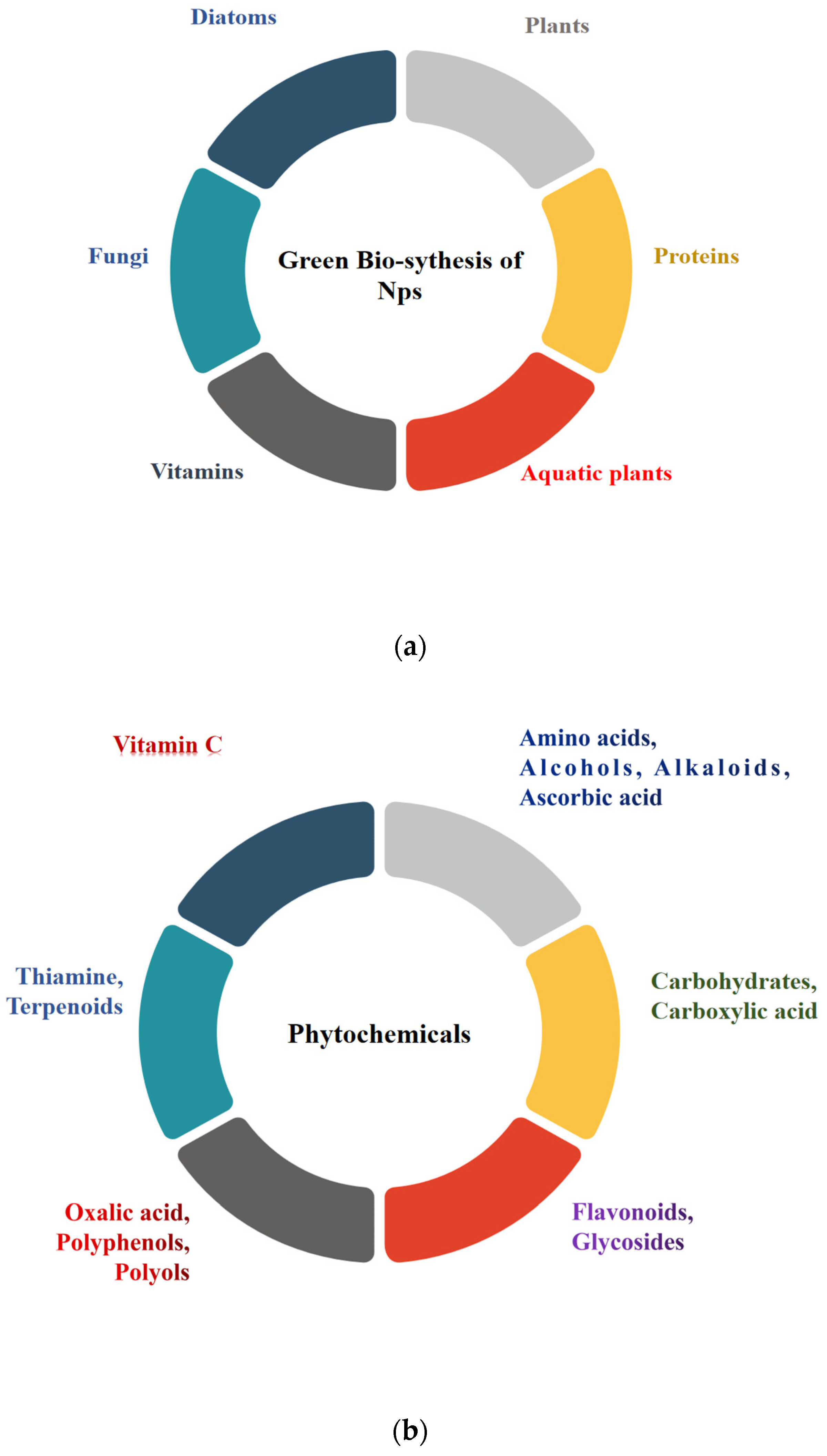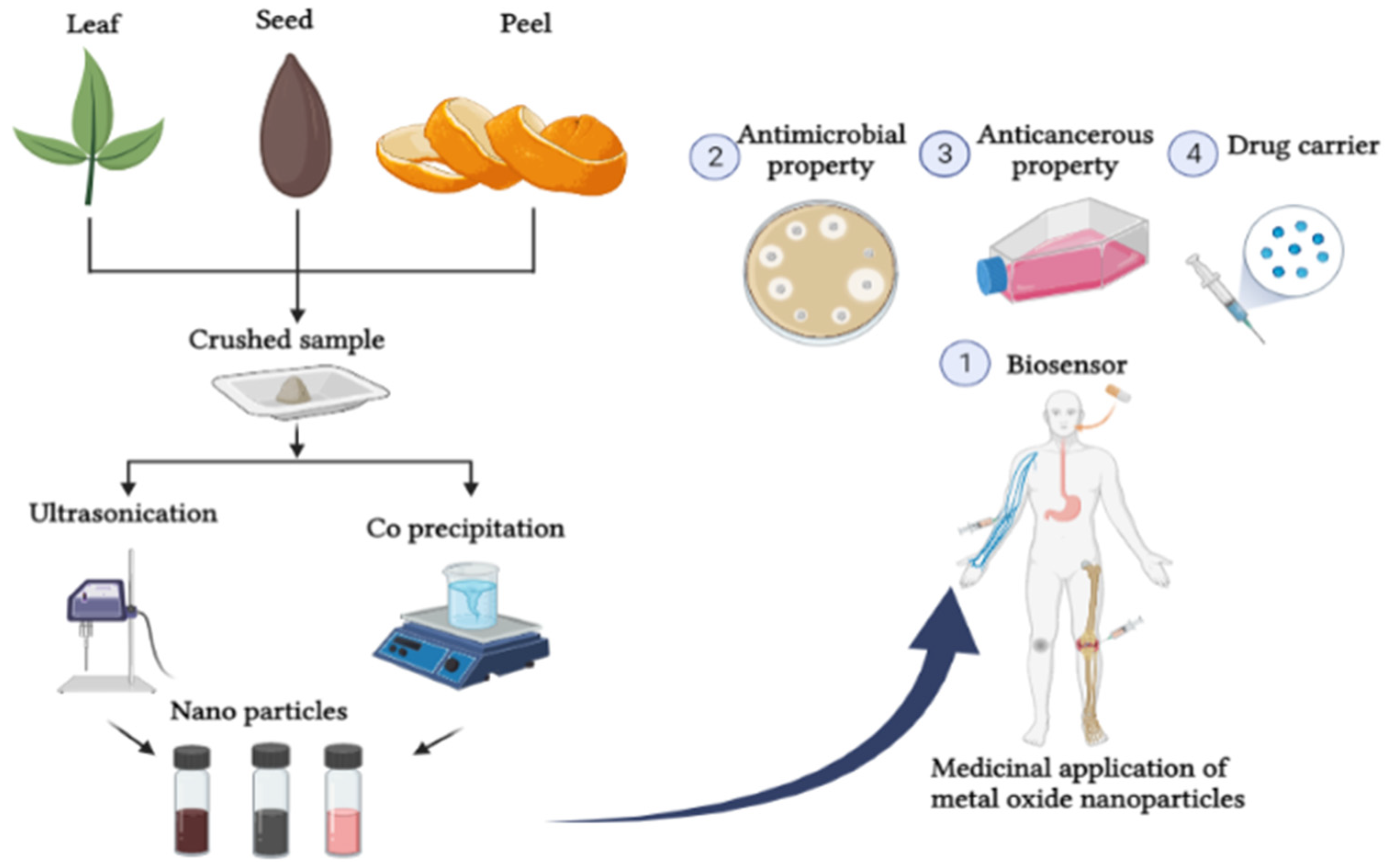You're using an outdated browser. Please upgrade to a modern browser for the best experience.

Submitted Successfully!
Thank you for your contribution! You can also upload a video entry or images related to this topic.
For video creation, please contact our Academic Video Service.
| Version | Summary | Created by | Modification | Content Size | Created at | Operation |
|---|---|---|---|---|---|---|
| 1 | Selvarajan Ethiraj | -- | 2048 | 2022-06-03 11:21:46 | | | |
| 2 | Jessie Wu | Meta information modification | 2048 | 2022-06-07 03:34:03 | | | | |
| 3 | Jessie Wu | -5 word(s) | 2043 | 2022-06-07 03:35:39 | | |
Video Upload Options
We provide professional Academic Video Service to translate complex research into visually appealing presentations. Would you like to try it?
Cite
If you have any further questions, please contact Encyclopedia Editorial Office.
Ethiraj, S.; Vuppala, S.; , .; John, A.; Patel, H.; Ramachandran, B.; Chandrasekar, N. Applications of Nanoparticles. Encyclopedia. Available online: https://encyclopedia.pub/entry/23711 (accessed on 23 December 2025).
Ethiraj S, Vuppala S, , John A, Patel H, Ramachandran B, et al. Applications of Nanoparticles. Encyclopedia. Available at: https://encyclopedia.pub/entry/23711. Accessed December 23, 2025.
Ethiraj, Selvarajan, Srikanth Vuppala, , Ashwini John, Himanshu Patel, Balaji Ramachandran, Narendhar Chandrasekar. "Applications of Nanoparticles" Encyclopedia, https://encyclopedia.pub/entry/23711 (accessed December 23, 2025).
Ethiraj, S., Vuppala, S., , ., John, A., Patel, H., Ramachandran, B., & Chandrasekar, N. (2022, June 03). Applications of Nanoparticles. In Encyclopedia. https://encyclopedia.pub/entry/23711
Ethiraj, Selvarajan, et al. "Applications of Nanoparticles." Encyclopedia. Web. 03 June, 2022.
Copy Citation
In recent times, metal oxide nanoparticles (NPs) have been regarded as having important commercial utility. However, the potential toxicity of these nanomaterials has also been a crucial research concern. In this regard, an important solution for ensuring lower toxicity levels and thereby facilitating an unhindered application in human consumer products is the green synthesis of these particles. Although a naïve approach, the biological synthesis of metal oxide NPs using microorganisms and plant extracts opens up immense prospects for the production of biocompatible and cost-effective particles with potential applications in the healthcare sector.
nanoparticles (NPs)
nanoparticles
drugs
1. Introduciton
NPs possess tremendous advantages for use in many areas of day-to-day activities. Therefore, it is important to explore NPs in depth. Figure 1 shows a schematic representation of nanoparticle synthesis methods and the applications of NPs discussed. NPs for use in the human body include biosynthesized noble metal NPs, which have many important applications. They make use of the molecular engine to address medicinal difficulties, and molecular information is used to support and advance human fitness at the molecular scale. This leads to the protection and development of human health. Fernández-Llamosas biosynthesized selenium NPs, which have many benefits for human health, using Azoarcus sp. CIB, [1]. The classification of different nanoparticle synthesis methods and their applications is depicted in Figure 1.

Figure 1. Classification of different nanoparticle synthesis methods (a) and their applications (b).
Regarding uses in biomedical research, the medicinal field still has unsolved issues, and NPs are the key to certain issues. The synthesis of NPs using extracts of leaves (plant) and/or bark provides more extensive applications in biotechnology [2], sensors [3], medicine [4], catalysis [5], optical devices [6], coatings [7], drug delivery [8], water remediation [9], and agriculture [10]. The NPs have micro and/or nanomolar sensitivity and can be detected via imaging instruments, which makes them suitable for imaging, therapy, and the delivery of drugs [11]. NPs of different dimensions have different biomedical uses. NPs have even been loaded onto TiO2 nanotube implants for use as orthopedic implant materials. The NPs increase the biocompatibility of the implants, ultimately leading to a longer life span and greater effectiveness of the implant.
2. Anti-Inflammatory Properties of Nanoparticles
Nanoparticles have been developed as anti-inflammatory mediators in recent years. NPs have a large surface-area-to-volume ratio and are used for obstructing substances accompanying inflammation such as cytokines and inflammation-supporting enzymes, associated with other complements. Numerous metal-based NPs have been reported with excellent anti-inflammatory properties, such as those based on silver, gold, copper, and iron oxide. Researchers demonstrate the mechanism for constructing anti-inflammatory properties in NPs. Figure 2 depicts the mechanism of nanoparticles in anti-inflammatory systems. Swelling is the body’s instant response to interior damage, contagion, hormone inequity, and failure in the interior structures or external features, such as in an attack by pathogenic microorganisms or an external element. This leads to overweight, food allergies, or interactions with ecological contagions. Distinctive resistant cells possess antigen receptors capable of sensing biochemical signs. Swelling is caused by cellular and tissue injury resulting from an imbalance in the signals controlling the inflammation [12]. Upon injury or infection, muscles invoke an inflammatory response that leads to the deployment of macrophages and killer cells [13][14]. Macrophages have the main role in auto-modifiable inflammatory processes. Macrophages are large, mononucleated phagocytes produced in the bone marrow and originate as moveable white blood cells (WBCs) called monocytes in the bloodstream [15]. These monocytes then drift to various locations in numerous tissues and form macrophages. Macrophages are of two kinds: pro-inflammatory M1 macrophages whose manufacture encourages inflammation and M2 macrophages that are alternatively activated as an anti-inflammatory response and stimulate the remodeling of the swollen tissues and organs. Macrophages are able to sustain the inflammatory process by inducing changes among the two phenotypes contingent on the retarder’s disorder [16][17]. Through swelling, the macrophages overwhelm cellular and tissue damage by phagocytosis and lead to inflammation via activation signals stimulating the macrophages.

Figure 2. Anti-inflammatory mechanism adopted by various nanoparticles.
3. In Therapeutics
NPs are the ultimate platform for biomedical uses and therapeutic interventions. Cancer is a notorious and deadly disease and still stands as one of the principal health issues of the 21st century. Hence, there is an urgent need for anti-cancer medicine. The current advances in therapeutic options for cancer have lagged in differentiating between cancerous and normal cells, failing to produce a complete anti-cancer response [18]. In recent times, researchers have found that metal oxide NPs such as Zn and Ce oxide NPs hold considerable promise as anti-cancer medicines [19][20]. Cerium nanoparticles (CeO NPs) consisting of a cerium core enclosed by an oxygen lattice have shown extensive potential as a therapeutic agent [21]. Silver (Ag) NPs synthesized using Abelmoschus esculentus (L.) pulp extract have shown potential therapeutic uses and efficacy in killing Jurkat cells in vitro. The anticancer activity of Ag NPs was found to be strongly associated with higher levels of reactive oxygen species (ROS) and reactive nitrogen species, with a loss of integrity in the mitochondrial membrane [22]. More recently, the anti-cancer activity of Ag NPs synthesized from Punica granatum leaf extract (PGE) was investigated against a liver cancer cell line (HepG2). The results showed that the PGE-AgNPs showed greater efficacy in killing cancer cells. Figure 3 shows a schematic representation of the killing of cancer cells using AgNPs. Yet another report by Saratale showed that AgNPs synthesized from the common medicinal plant dandelion (Taraxacum officinale) had a high cytotoxic effect against HepG2 [23]. It is clear that in the future, NPs could be personalized for patient care. Furthermore, AgNPs developed using Olax scandens leaf extract showed anti-cancer activities with respect to different cancer cells (B16: mouse melanoma cell line, A549: human lung cancer cell lines, and MCF7: human breast cancer cells) [24].

Figure 3. Several natural resources for synthesizing green NPs (a) and a few important bio-reductants found in plant extracts (b).
It was reported recently that iron oxide NPs have the dual capacity to act as both magnetic and photothermal agents in cancer therapy. This dual action was found to yield complete apoptosis-mediated cell death. Furthermore, these iron oxide NPs can be combined with laser therapy, showing complete regression of tumor cells in vivo [25]. Studies showed that photothermal therapy using green synthesized iron oxide nanoparticles loaded with the drug temozolomide with near-infrared light irradiation resulted in the death of glioblastoma cancer cells [26]. Bilici stated that superparamagnetic iron oxide nanoparticles act as a highly efficient photothermal therapy agent. Indocyanine-green-coated iron oxide nanoparticles were irradiated using laser treatment at 795 nm. This photothermal effect efficiently reduced the breast cancer cell line MCF7 when the ICG was free [27]. Green synthesized metal oxides play an important role in photothermal therapy as the metal oxide nanoparticles are irradiated by the light and can help in targeted drug release with a controllable dose. In 2013, Geetha synthesized gold NPs from the flower of the tree C. guianensis and explored their antileukemic cancer activity [28]. Fazal reported green synthesized anisotropic and cytocompatible gold NPs without any capping agent and studied its effectiveness along with photothermal therapy [29]. Their report found that the anisotropic particles exhibited a good photothermal effect for femtosecond laser exposure at 800 nm on A431 cancer cells, with low influence. Parida prepared metallic gold NPs, stabilizing them with ethanolic extract of clove (Syzygium aromaticum) and studying their anti-cancer potential and biomechanism using the human SUDHL-4 cell line. They found that the gold NPs could decrease the growth and viability of the SU-DHL-4 cell line and increase apoptosis [30]. The synthesis protocol and the important bio-reductants found in plant extracts are shown in Figure 3b.
4. In Drug Delivery Systems
Management of infections of the frontal section of the eye using commercially obtainable ocular drug delivery schemes has low efficiency. NPs have been designed for employment in preparations for eye drops or injectable solutions. Drugs loaded with NPs possess good drug pharmacokinetics, non-specific toxicity, pharmacodynamics, immunogenicity, and biorecognition, thereby improving the efficacy of the drugs [31]. Chitosan based polymeric NPs can act as drug carriers, paving the way for the growth of numerous dissimilar colloidal delivery vehicles. These NPs can cross biological barriers and protect macromolecules such as peptides, oligonucleotides, proteins, and genes from the degradation of biological media, allowing the delivery of drugs or macromolecules to the target site followed by precise release [32]. NPs are a promising strategy for the controlled delivery of a drug against human immunodeficiency virus (HIV) named lamivudine, which acts as a potent and selective inhibitor of type 1 and type 2 HIV [33]. Superparamagnetic iron oxide NPs (SPIONs), together with the drug, have been used for site-specific delivery of drugs. The drug can readily bind to the SPION surface and can be guided with an external magnetic field to the desired site, where the NPs can enter the target cell and deliver the drug [34]. The SPION is exposed to another cell once the drug is dissolved inside the target cell, which can reduce the absorption time, the quantity of the drug, and the interaction of the drug with non-target cells. Sripriya reported a sophisticated technique for the fabrication of multifunctional polyelectrolyte thin films in the loading and delivery of therapeutic drugs. The Ag NPs biosynthesized from the leaf extract of Hybanthus enneaspermus were found to be effective reducing agents with significant potential for remotely activated drug delivery, antibacterial coatings and wound dressings [7].
5. Medical Diagnosis, Imaging, and Sensors
In recent times, NPs have played a vital role in multimodal and multifunctional molecular imaging. Owing to the nanoscale sizes, high agent loadings, tailored surface properties, and controlled release patterns, as well as the enhanced permeability and retention effect, nanotechnology has emerged as a promising strategy for cancer diagnosis. Magnetic NPs such as iron oxide have gained tremendous attention in drug delivery systems and magnetic resonance imaging, as well as in magnetic fluid hyperthermia for diagnosis and cancer therapy [35]. Critical information regarding the progress of a deadly cancerous disease can be obtained readily via imaging of the sentinel lymph nodes (SLNs). The naked carbon NPs obtained from food-grade honey can be effectively employed in SLN imaging, which is attributed to their strong optical absorption in the near-infrared region, smaller size, and rapid lymphatic transport. This has great potential for faster resection of the SLN and also decreases complications in axillary investigations using low-resolution imaging techniques [36]. Fluorescent carbon NPs were synthesized using grape juice via chemical-free simple hydrothermal treatment with high water stability, lower toxicity, and excellent stability. These NPs can be employed as excellent fluorescent probes for the cellular imaging process and could be a promising alternative to traditional quantum dots [37]. The medicinal applications of green synthesized metal oxide nanoparticles are shown in Figure 4.

Figure 4. Medicinal applications of green synthesized metal oxides (created on 14 April 2022 by BioRender.com).
Fluorescent-nanoparticle-based imaging probes are equipped with current labeling technology and are also expected to be used in new medical diagnostic tools, due to their superior brightness and photostable properties compared to conventional molecular probes [38]. Raja prepared Ag NPs using Calliandra haematocephala leaf extract for the detection of H2O2. The results showed that the Ag NPs could be successfully used to detect the concentrations of H2O2 present in various samples [39]. Zheng prepared Ag NPs via a green biochemical method employing Corymbia citriodora leaf extract as an effective reducing and stabilizing agent and also explored the application of biosynthesized zinc oxide NPs in constructing an H2O2 biosensor [40]. The results showed that the fabricated electrochemical H2O2 sensor could potentially be employed in the pharmaceutical field and in clinical trials. In recent years, food adulteration has become a serious issue; for instance, adulteration of milk makes it hazardous to drink. Varun synthesized Ag NPs for sensing melamine in milk [41]. Monitoring aquatic ecosystems is important because potentially toxic metal ions such as Cu2+ and Hg2+ can have severe effects on human health as well as on the environment. Ag NPs synthesized using the juice extract of Citrullus lanatus (watermelon) exhibited good ability to detect these ions in aqueous solutions [42]. Moreover, biosynthesized Ag-NPs using Camellia sinensis (green tea) aqueous extract possessed good properties for sensing Cu2+ and Pb2+ ions in aqueous solutions [43]. Gold NPs synthesized from Osmundaria obtusiloba extract proved to be an excellent agent with good optical properties that could be employed as a suitable candidate for sensor applications [44]. Polluted water is a major threat to both quality of life and public health. Ag NPs prepared by green synthesis using Achyranthes aspera L. extract and protected by chitosan could be employed as a sensor for removing thiocyanate ions present in contaminated water [45].
References
- Fernández-Llamosas, H.; Castro, L.; Blázquez, M.L.; Díaz, E.; Carmona, M. Biosynthesis of selenium nanoparticles by Azoarcus sp. CIB. Microb. Cell Factories 2016, 15, 109.
- Khatoon, N.; Mazumder, J.A.; Sardar, M. Biotechnological Applications of Green Synthesized Silver Nanoparticles. J. Nanosci. Curr. Res. 2017, 2, 2572-0813.
- Zhang, Y.; Chu, W.; Foroushani, A.D.; Wang, H.; Li, D.; Liu, J.; Barrow, C.J.; Wang, X.; Yang, W. New Gold Nanostructures for Sensor Applications: A Review. Materials 2014, 7, 5169–5201.
- Moghaddam, A.B.; Namvar, F.; Moniri, M.; Tahir, P.M.; Azizi, S.; Mohamad, R. Nanoparticles Biosynthesized by Fungi and Yeast: A Review of Their Preparation, Properties, and Medical Applications. Molecules 2015, 20, 16540–16565.
- Xu, L.; Wu, X.-C.; Zhu, J.-J. Green preparation and catalytic application of Pd nanoparticles. Nanotechnology 2008, 19, 305603.
- Sathyavathi, R.; Krishna, M.B.M.; Rao, D.N. Biosynthesis of Silver Nanoparticles Using Moringa oleifera Leaf Extract and Its Application to Optical Limiting. J. Nanosci. Nanotechnol. 2011, 11, 2031–2035.
- Sripriya, J.; Anandhakumar, S.; Achiraman, S.; Antony, J.J.; Siva, D.; Raichur, A.M. Laser receptive polyelectrolyte thin films doped with biosynthesized silver nanoparticles for antibacterial coatings and drug delivery applications. Int. J. Pharm. 2013, 457, 206–213.
- Khan, S.A.; Gambhir, S.; Ahmad, A. Extracellular biosynthesis of gadolinium oxide (Gd2O3) nanoparticles, their biodistribution and bioconjugation with the chemically modified anticancer drug taxol. Beilstein J. Nanotechnol. 2014, 5, 249–257.
- Kefeni, K.K.; Mamba, B.; Msagati, T. Application of spinel ferrite nanoparticles in water and wastewater treatment: A review. Sep. Purif. Technol. 2017, 188, 399–422.
- Sabir, S.; Arshad, M.; Chaudhari, S.K. Zinc Oxide Nanoparticles for Revolutionizing Agriculture: Synthesis and Applications. Sci. World J. 2014, 2014, 925494.
- Padmanabhan, P.; Kumar, A.; Kumar, S.; Chaudhary, R.K.; Gulyás, B. Nanoparticles in practice for molecular-imaging applications: An overview. Acta Biomater. 2016, 41, 1–16.
- Brenner, P.S.; Krakauer, T. Regulation of Inflammation: A Review of Recent Advances in Anti-Inflammatory Strategies. Curr. Med. Chem. Anti-Allergy Agents 2003, 2, 274–283.
- Yanai, H.; Matsuda, A.; An, J.; Koshiba, R.; Nishio, J.; Negishi, H.; Ikushima, H.; Onoe, T.; Ohdan, H.; Yoshida, N.; et al. Conditional ablation of HMGB1 in mice reveals its protective function against endotoxemia and bacterial infection. Proc. Natl. Acad. Sci. USA 2013, 110, 20699–20704.
- Yu, D.; Rao, S.; Tsai, L.M.; Lee, S.K.; He, Y.; Sutcliffe, E.L.; Srivastava, M.; Linterman, M.; Zheng, L.; Simpson, N.; et al. The Transcriptional Repressor Bcl-6 Directs T Follicular Helper Cell Lineage Commitment. Immunity 2009, 31, 457–468.
- O’Sullivan, D.; van der Windt, G.J.; Huang, S.C.-C.; Curtis, J.D.; Chang, C.-H.; Buck, M.; Qiu, J.; Smith, A.M.; Lam, W.Y.; DiPlato, L.M.; et al. Memory CD8+ T Cells Use Cell-Intrinsic Lipolysis to Support the Metabolic Programming Necessary for Development. Immunity 2014, 41, 75–88.
- Liu, Y.-C.; Zou, X.-B.; Chai, Y.-F.; Yao, Y.-M. Macrophage Polarization in Inflammatory Diseases. Int. J. Biol. Sci. 2014, 10, 520–529.
- Dunster, J.L. The macrophage and its role in inflammation and tissue repair: Mathematical and systems biology approaches. WIREs Syst. Biol. Med. 2015, 8, 87–99.
- Rasmussen, J.W.; Martinez, E.; Louka, P.; Wingett, D.G. Zinc oxide nanoparticles for selective destruction of tumor cells and potential for drug delivery applications. Expert Opin. Drug Deliv. 2010, 7, 1063–1077.
- Bisht, G.; Rayamajhi, S. ZnO Nanoparticles: A Promising Anticancer Agent. Nanobiomedicine 2016, 3, 9.
- Kuddus, S.A. Nanoceria and Its Perspective in Cancer Treatment. J. Cancer Sci. Ther. 2017, 9, 368–373.
- Gao, Y.; Gao, F.; Chen, K.; Ma, J.-L. Cerium oxide nanoparticles in cancer. OncoTargets Ther. 2014, 7, 835–840.
- Mollick, M.M.R.; Rana, D.; Dash, S.K.; Chattopadhyay, S.; Bhowmick, B.; Maity, D.; Mondal, D.; Pattanayak, S.; Roy, S.; Chakraborty, M.; et al. Studies on green synthesized silver nanoparticles using Abelmoschus esculentus (L.) pulp extract having anticancer (in vitro) and antimicrobial applications. Arab. J. Chem. 2019, 12, 2572–2584.
- Saratale, R.G.; Shin, H.S.; Kumar, G.; Benelli, G.; Kim, D.-S.; Saratale, G.D. Exploiting antidiabetic activity of silver nanoparticles synthesized using Punica granatum leaves and anticancer potential against human liver cancer cells (HepG2). Artif. Cells Nanomed. Biotechnol. 2017, 46, 211–222.
- Mukherjee, S.; Chowdhury, D.; Kotcherlakota, R.; Patra, S.; Vinothkumar, B.; Bhadra, M.P.; Sreedhar, B.; Patra, C.R. Potential Theranostics Application of Bio-Synthesized Silver Nanoparticles (4-in-1 System). Theranostics 2014, 4, 316–335.
- Espinosa, A.; Di Corato, R.; Kolosnjaj-Tabi, J.; Flaud, P.; Pellegrino, T.; Wilhelm, C. Duality of Iron Oxide Nanoparticles in Cancer Therapy: Amplification of Heating Efficiency by Magnetic Hyperthermia and Photothermal Bimodal Treatment. ACS Nano 2016, 10, 2436–2446.
- Kwon, Y.M.; Je, J.; Cha, S.H.; Oh, Y.; Cho, W.H. Synergistic combination of chemo-phototherapy based on temozolomide/ICG-loaded iron oxide nanoparticles for brain cancer treatment. Oncol. Rep. 2019, 42, 1709–1724.
- Bilici, K.; Muti, A.; Sennaroğlu, A.; Acar, H.Y. Indocyanine Green Loaded APTMS Coated SPIONs for Dual Phototherapy of Cancer. J. Photochem. Photobiol. B Biol. 2019, 201, 111648.
- Geetha, R.; Ashokkumar, T.; Tamilselvan, S.; Govindaraju, K.; Sadiq, M.; Singaravelu, G. Green synthesis of gold nanoparticles and their anticancer activity. Cancer Nanotechnol. 2013, 4, 91–98.
- Fazal, S.; Jayasree, A.; Sasidharan, S.; Koyakutty, M.; Nair, S.V.; Menon, D. Green Synthesis of Anisotropic Gold Nanoparticles for Photothermal Therapy of Cancer. ACS Appl. Mater. Interfaces 2014, 6, 8080–8089.
- Parida, U.K.; Biswal, S.K.; Bindhani, B.K. Green Synthesis and Characterization of Gold Nanoparticles: Study of Its Biological Mechanism in Human SUDHL-4 Cell Line. Adv. Biol. Chem. 2014, 04, 360–375.
- Janagam, D.R.; Wu, L.; Lowe, T.L. Nanoparticles for drug delivery to the anterior segment of the eye. Adv. Drug Deliv. Rev. 2017, 122, 31–64.
- Rajan, M.; Raj, V. Potential Drug Delivery Applications of Chitosan Based Nanomaterials. Int. Rev. Chem. Eng. 2013, 5, 145–155.
- Dev, A.; Binulal, N.S.; Anitha, A.; Nair, S.V.; Furuike, T.; Tamura, H.; Jayakumar, R. Preparation of Poly (Lactic Acid)/Chitosan Nanoparticles for Anti-HIV Drug Delivery Applications. Carbohydr. Polym. 2010, 80, 833–838.
- Siddiqi, K.S.; Rahman, A.U.; Tajuddin; Husen, A. Biogenic Fabrication of Iron/Iron Oxide Nanoparticles and Their Application. Nanoscale Res. Lett. 2016, 11, 498.
- Malekigorji, M.; Curtis, A.D.M.; Hoskins, C. The Use of Iron Oxide Nanoparticles for Pancreatic Cancer Therapy. J. Nanomed. Res. 2014, 1, 00004.
- Wu, L.; Cai, X.; Nelson, K.; Xing, W.; Xia, J.; Zhang, R.; Stacy, A.J.; Luderer, M.; Lanza, G.M.; Wang, L.V. A Green Synthesis of Carbon Nanoparticles from Honey and Their Use in Real-Time Photoacoustic Imaging. Nano Res. 2013, 6, 312–325.
- Huang, H.; Xu, Y.; Tang, C.-J.; Chen, J.-R.; Wang, A.-J.; Feng, J.-J. Facile and green synthesis of photoluminescent carbon nanoparticles for cellular imaging. New J. Chem. 2014, 38, 784–789.
- Bhunia, S.K.; Saha, A.; Maity, A.; Ray, S.C.; Jana, N.R. Carbon Nanoparticle-based Fluorescent Bioimaging Probes. Sci. Rep. 2013, 3, 1473.
- Raja, S.; Ramesh, V.; Thivaharan, V. Green biosynthesis of silver nanoparticles using Calliandra haematocephala leaf extract, their antibacterial activity and hydrogen peroxide sensing capability. Arab. J. Chem. 2017, 10, 253–261.
- Zheng, Y.; Wang, Z.; Peng, F.; Fu, L. Application of biosynthesized ZnO nanoparticles on an electrochemical H2O2 biosensor. Braz. J. Pharm. Sci. 2016, 52, 781–786.
- Varun, S.; Daniel, S.K.; Gorthi, S.S. Rapid sensing of melamine in milk by interference green synthesis of silver nanoparticles. Mater. Sci. Eng. C 2017, 74, 253–258.
- Maiti, S.; Barman, G.; Laha, J.K. Detection of heavy metals (Cu+2, Hg+2) by biosynthesized silver nanoparticles. Appl. Nanosci. 2016, 6, 529–538.
- Hoyos, L.E.S.-D.; Sánchez-Mendieta, V.; Vilchis-Nestor, A.R.; Camacho-López, M.A. Biogenic Silver Nanoparticles as Sensors of Cu2+ and Pb2+ in Aqueous Solutions. Univers. J. Mater. Sci. 2017, 5, 29–37.
- Rojas-Perez, A.; Adorno, L.; Cordero, M.; Ruiz, A.; Mercado-Diaz, Z.; Rodriguez, A.; Betancourt, L.; Velez, C.; Feliciano, I.; Cabrea, C. Biosynthesis of Gold Nanoparticles Using Osmudaria Obtusiloba Extract and Their Potential Use in Optical Sensing Application. Austin J. Biosens. Bioelectron. 2015, 1, 1–9.
- Praveena, V.D.; Kumar, K.V. A Thiocyanate Sensor Based on Ecofriendly Silver Nanoparticles Thin Film Composite. Int. J. Innov. Sci. Eng. Technol. 2015, 2, 741–752.
More
Information
Subjects:
Nanoscience & Nanotechnology
Contributors
MDPI registered users' name will be linked to their SciProfiles pages. To register with us, please refer to https://encyclopedia.pub/register
:
View Times:
1.5K
Entry Collection:
Environmental Sciences
Revisions:
3 times
(View History)
Update Date:
07 Jun 2022
Notice
You are not a member of the advisory board for this topic. If you want to update advisory board member profile, please contact office@encyclopedia.pub.
OK
Confirm
Only members of the Encyclopedia advisory board for this topic are allowed to note entries. Would you like to become an advisory board member of the Encyclopedia?
Yes
No
${ textCharacter }/${ maxCharacter }
Submit
Cancel
Back
Comments
${ item }
|
More
No more~
There is no comment~
${ textCharacter }/${ maxCharacter }
Submit
Cancel
${ selectedItem.replyTextCharacter }/${ selectedItem.replyMaxCharacter }
Submit
Cancel
Confirm
Are you sure to Delete?
Yes
No




